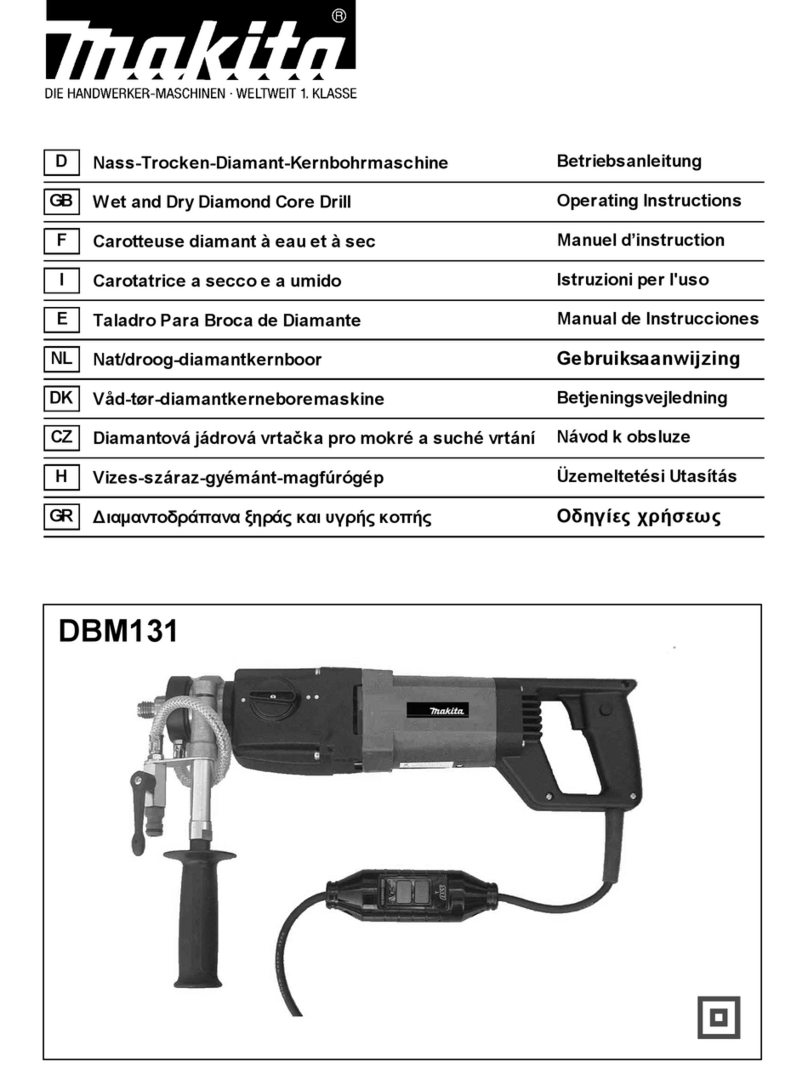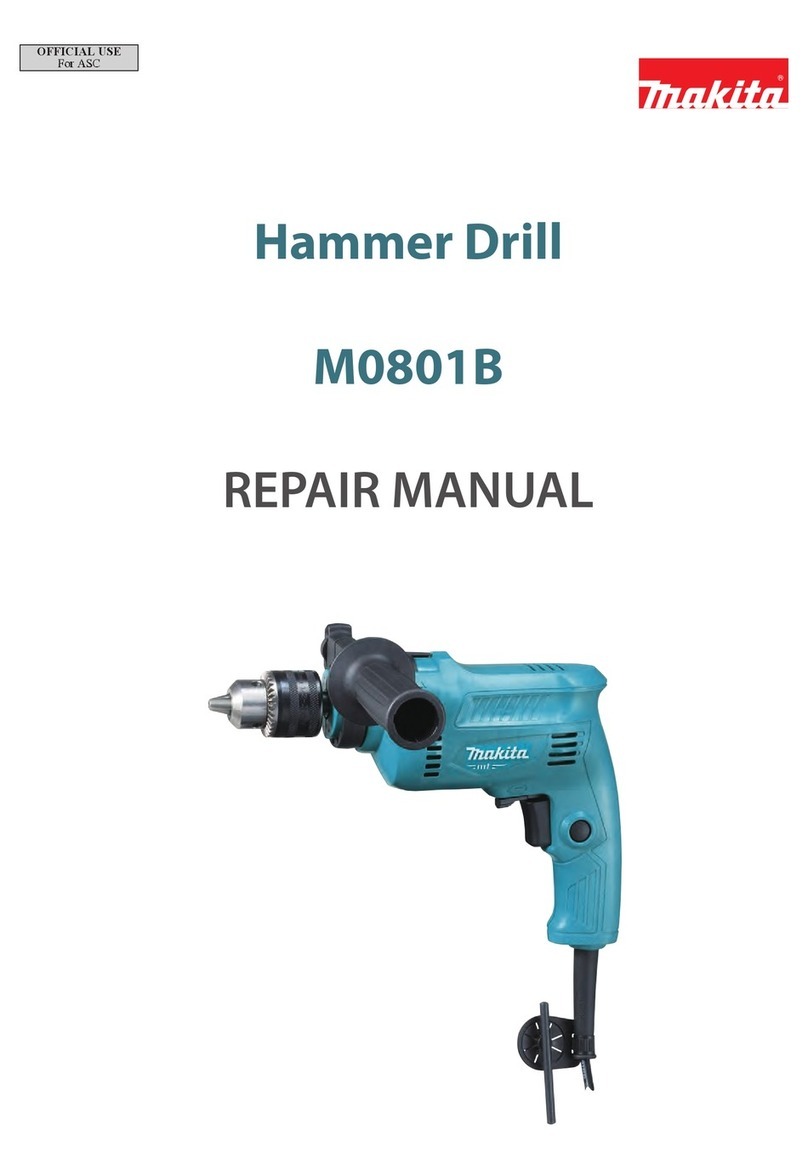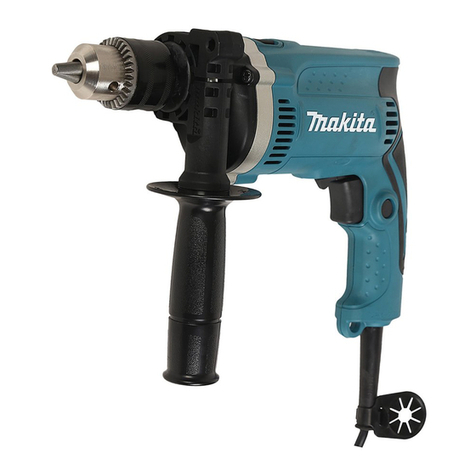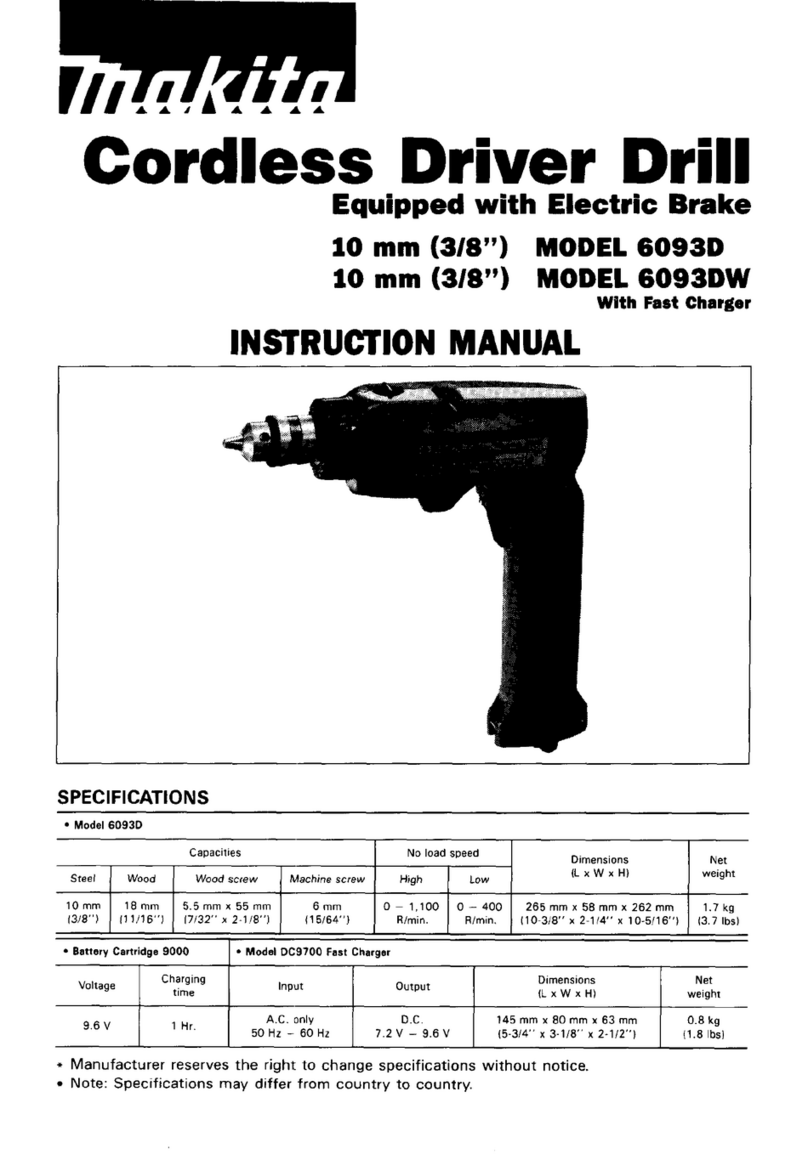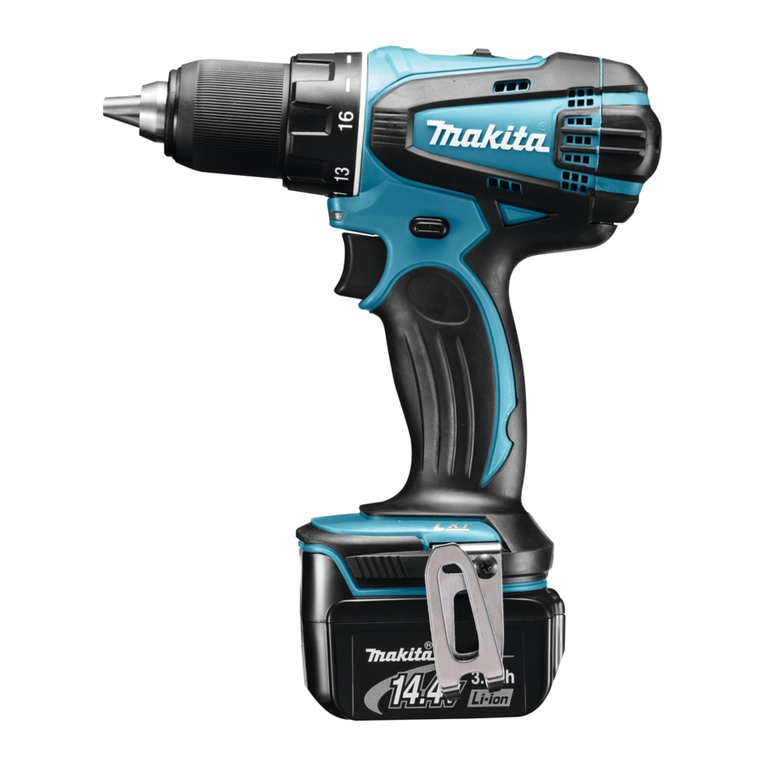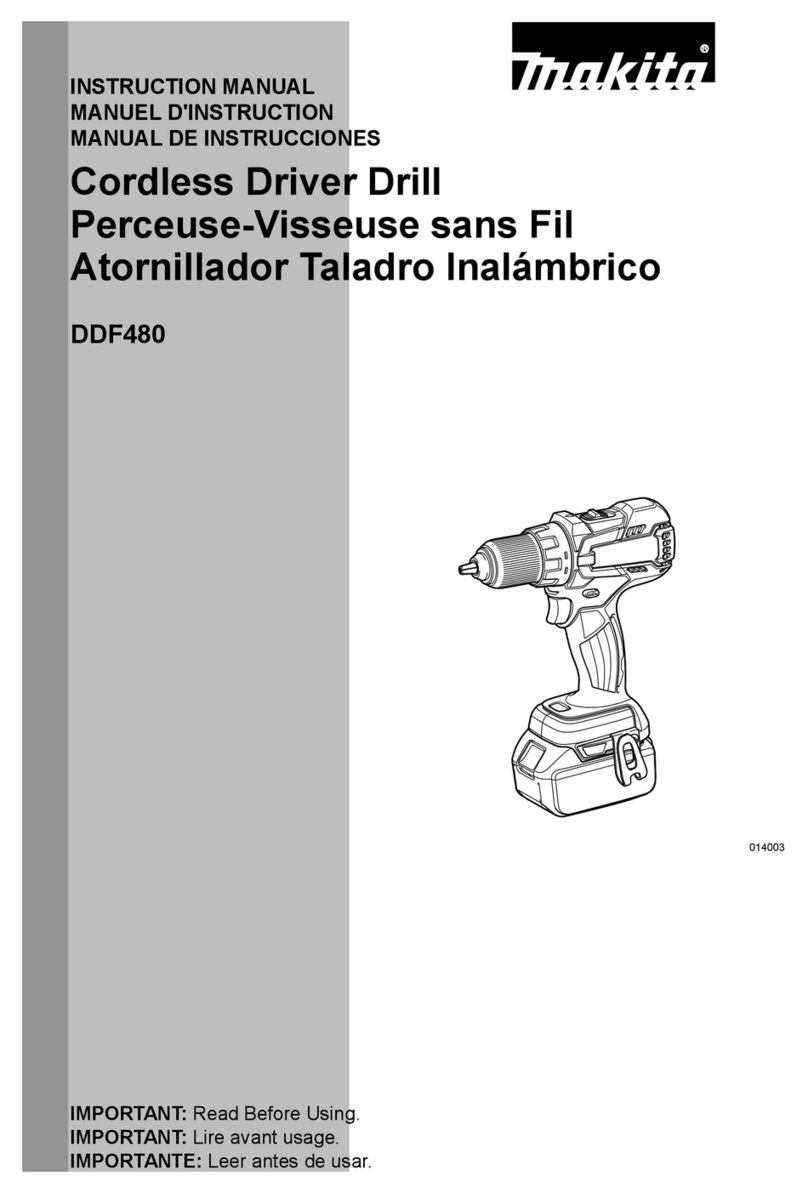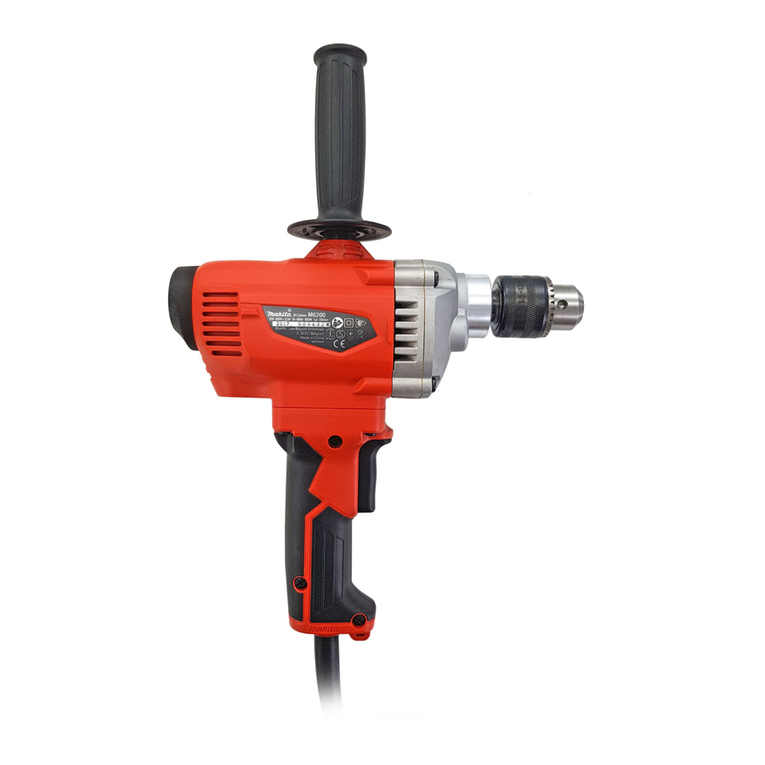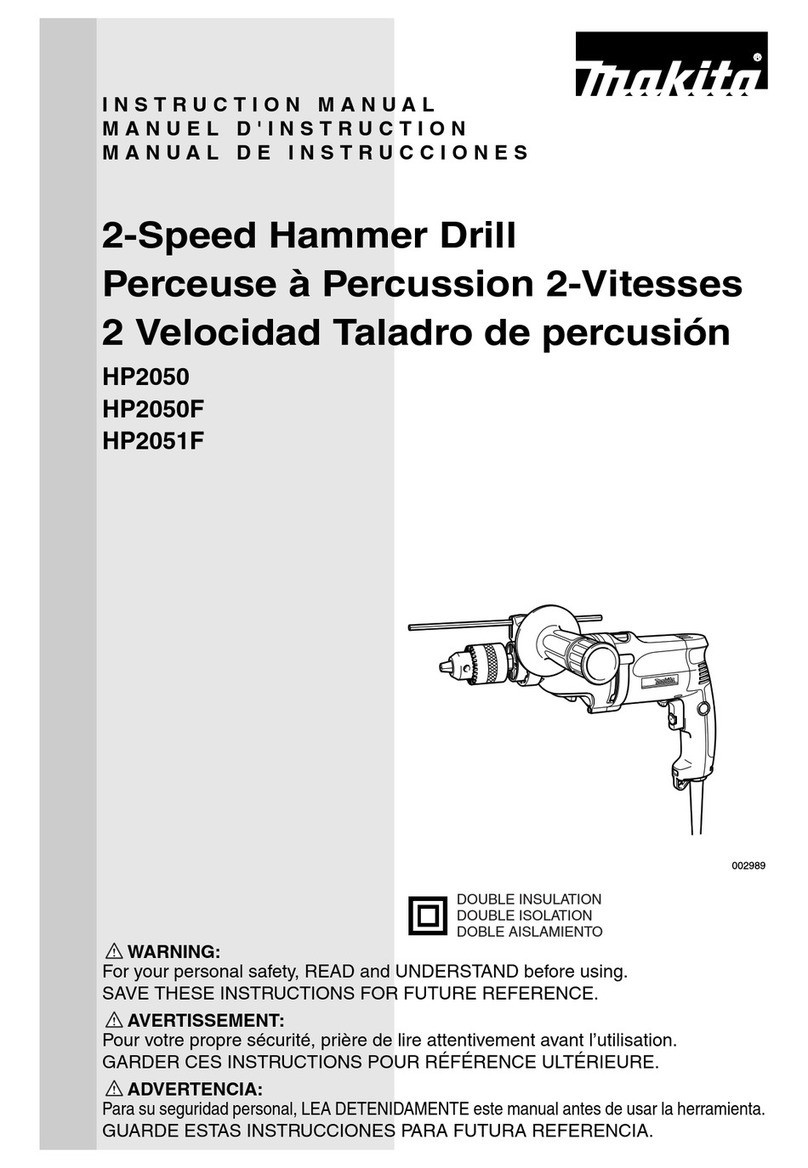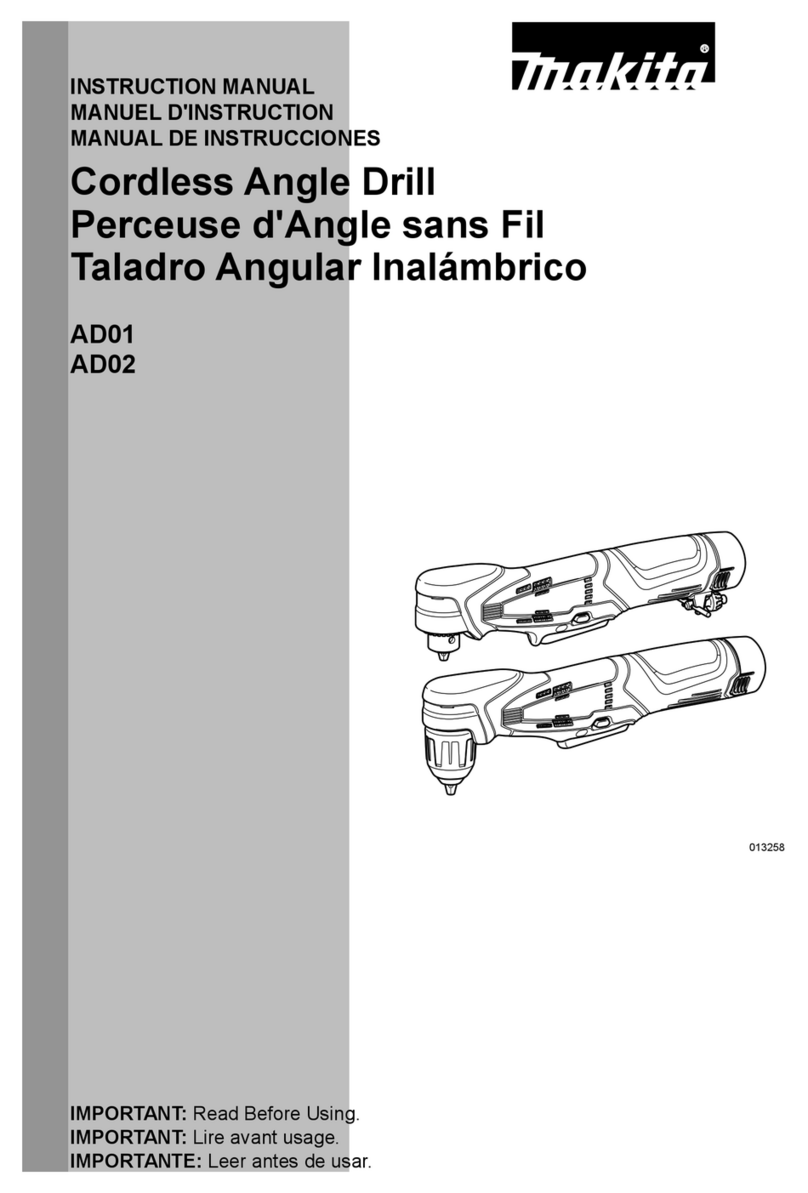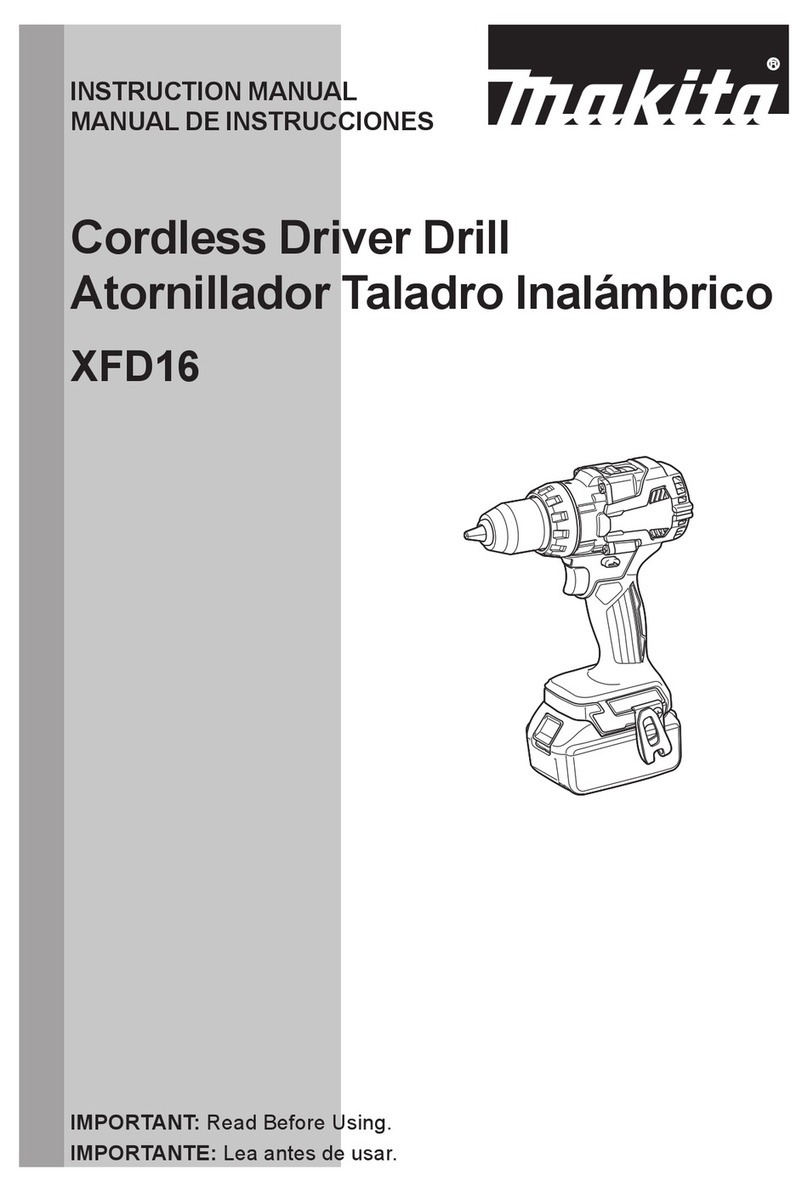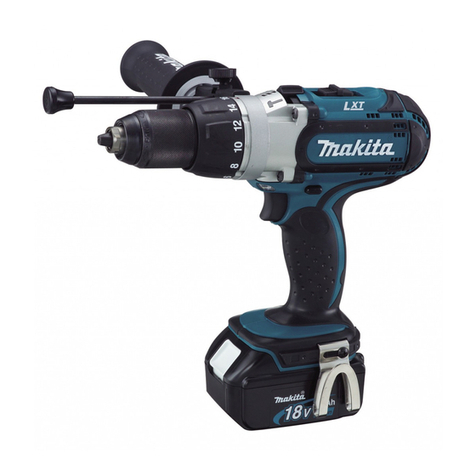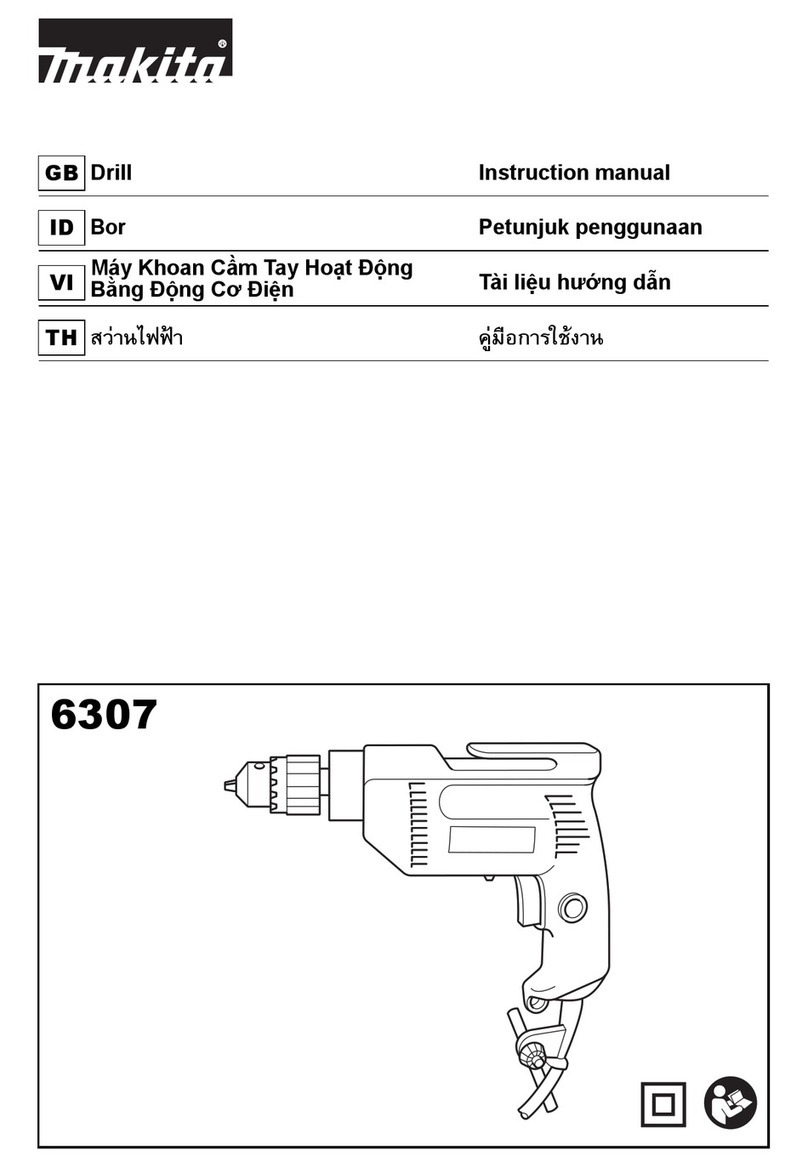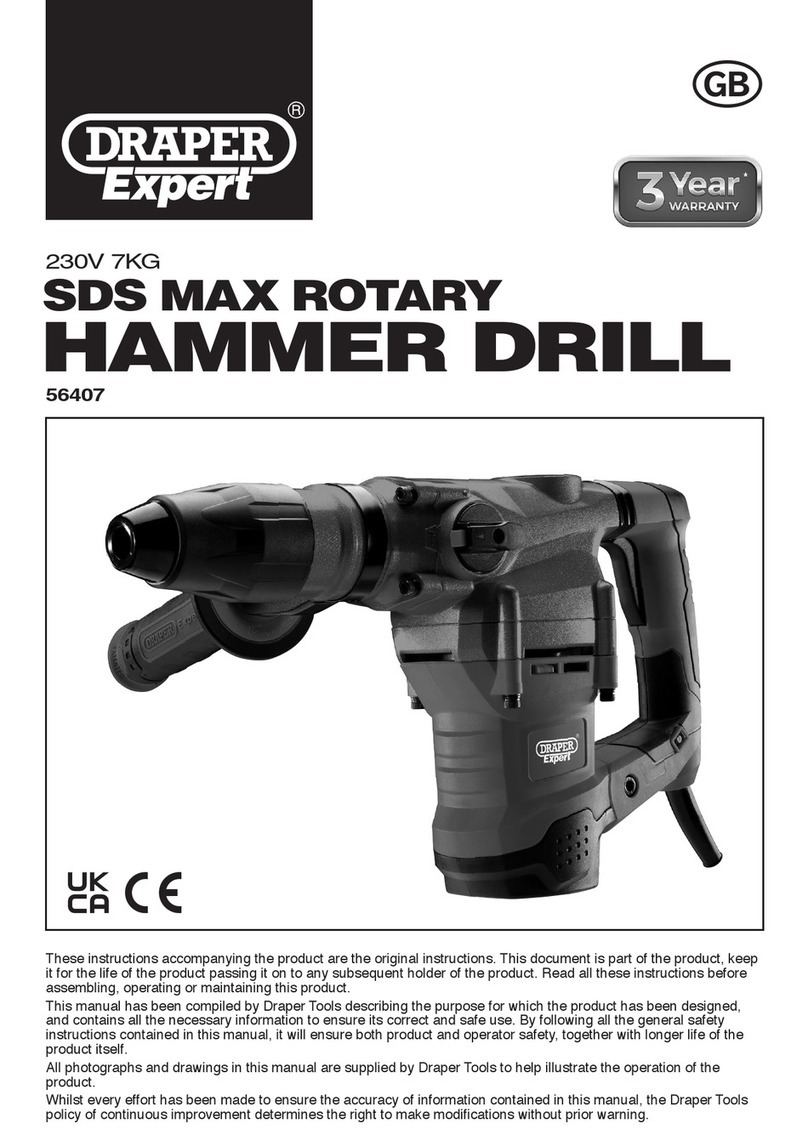
6ENGLISH
A battery short can cause a large current
ow, overheating, possible burns and even a
breakdow n.
6 . Do not store the tool and battery cartridge in
locations w here the temperature may reach or
exceed 50 ° C ( 122 ° F) .
7 . Do not incinerate the battery cartridge even if
it is severely damaged or is completely w orn
out. The battery cartridge can explode in a re.
8 . Do not nail, cut, crush, throw , drop the battery
cartridge, or hit against a hard object to the
battery cartridge. S uch conduct may result in a
re, excessive heat, or explosion.
9 . Do not use a damaged battery.
10. The contained lithium-ion batteries are subject
to the Dangerous Goods Legislation require-
ments.
For commercial transports e.g. b y third parties,
forw arding agents, special req uirement on pack-
aging and lab eling must b e ob serv ed.
For preparation of the item b eing shipped, consult-
ing an ex pert for hazardous material is req uired.
Please also ob serv e possib ly more detailed
national regulations.
T ape or mask off open contacts and pack up the
b attery in such a manner that it cannot mov e
around in the packaging.
1 1 . W hen disposing the battery cartridge, remove
it from the tool and dispose of it in a safe
place. Follow your local regulations relating to
disposal of battery.
12. Use the batteries only w ith the products
specied by Makita. Installing the b atteries to
non-compliant products may result in a re, exces-
siv e heat, ex plosion, or leak of electroly te.
13. If the tool is not used for a long period of time,
the battery must be removed from the tool.
14. During and after use, the battery cartridge may
take on heat w hich can cause burns or low
temperature burns. Pay attention to the han-
dling of hot battery cartridges.
15. Do not touch the terminal of the tool imme-
diately after use as it may get hot enough to
cause burns.
16. Do not allow chips, dust, or soil stuck into the
terminals, holes, and grooves of the battery
cartridge. It may result in poor performance or
b reakdow n of the tool or b attery cartridge.
17. Unless the tool supports the use near a
high-voltage electrical pow er lines, do not use
the battery cartridge near a high-voltage elec-
trical pow er lines. It may result in a malfunction
or b reakdow n of the tool or b attery cartridge.
SAVE THESE INSTRUCTIONS.
CAUTION: Only use genuine Makita batteries.
U se of non- genuine Makita b atteries, or b atteries that
hav e b een altered, may result in the b attery b ursting
causing res, personal injury and damage. It will
also v oid the Makita w arranty for the Makita tool and
charger.
Tips for maintaining maximum
battery life
1 . Charge the battery cartridge before completely
discharged. Alw ays stop tool operation and
charge the battery cartridge w hen you notice
less tool pow er.
2 . Never recharge a fully charged battery car-
tridge. Overcharging shortens the battery
service life.
3 . Charge the battery cartridge w ith room tem-
perature at 10 ° C - 40 ° C ( 50 ° F - 104 ° F) . Let
a hot battery cartridge cool dow n before
charging it.
4 . W hen not using the battery cartridge, remove
it from the tool or the charger.
5 . Charge the battery cartridge if you do not use
it for a long period ( more than six months) .
FUNCTIONAL
DESCRIPTION
CAUTION: Alw ays be sure that the tool is
sw itched off and the battery cartridge is removed
before adjusting or checking function on the tool.
Installing or removing battery
cartridge
CAUTION: Alw ays sw itch off the tool before
installing or removing of the battery cartridge.
CAUTION: Hold the tool and the battery car-
tridge rmly when installing or removing battery
cartridge. Failure to hold the tool and the b attery
cartridge rmly may cause them to slip off your hands
and result in damage to the tool and b attery cartridge
and a personal injury.
Fig.1: 1. Red indicator 2. Button 3. Battery cartridge
T o remov e the b attery cartridge, slide it from the tool
w hile sliding the b utton on the front of the cartridge.
T o install the b attery cartridge, align the tongue on the
b attery cartridge w ith the groov e in the housing and slip
it into place. Insert it all the w ay until it locks in place
w ith a little click. If y ou can see the red indicator on the
upper side of the b utton, it is not locked completely .
CAUTION: Alw ays install the battery cartridge
fully until the red indicator cannot be seen. If not,
it may accidentally fall out of the tool, causing injury to
y ou or someone around y ou.
CAUTION: Do not install the battery cartridge
forcibly. If the cartridge does not slide in easily , it is
not b eing inserted correctly .
